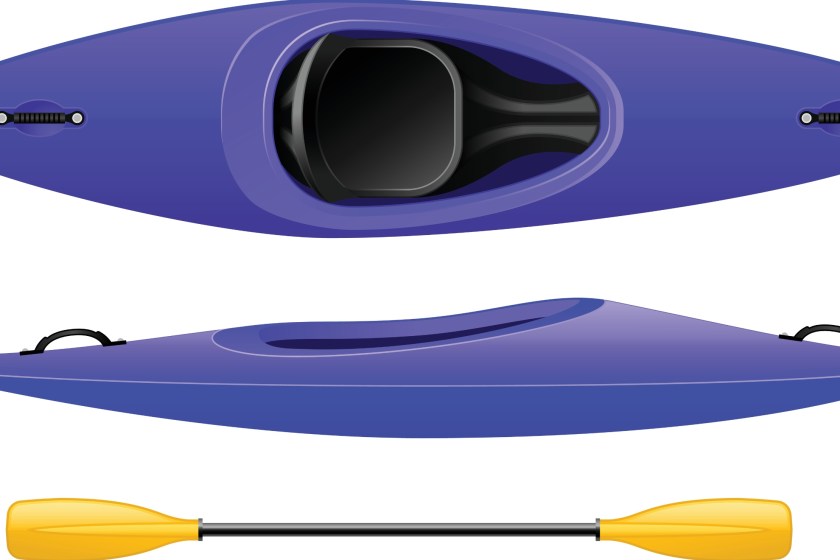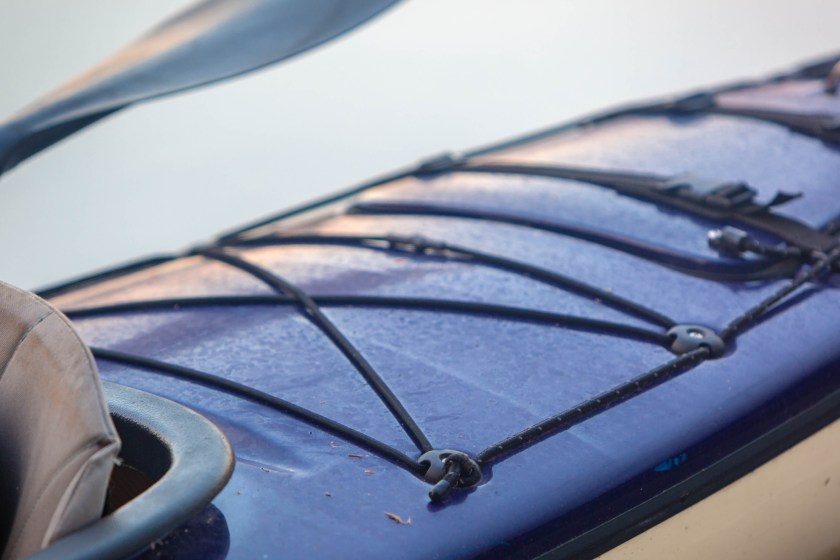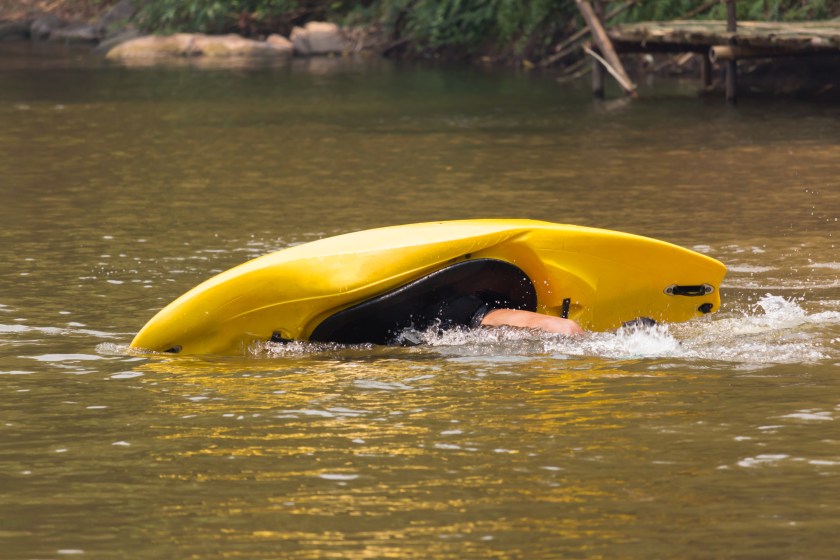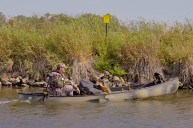It has been my mission this year to get outside and engage in more outdoor activities. One of the activities that I thoroughly enjoyed was kayaking. There's something relaxing about being out on the water, and I've had a wonderful time every time I've gone. Now that I have been a few times, there are some things I would have wanted to know before my first time kayaking. Luckily for you, the professionals on Reddit and I have all contributed our two cents on what we think every beginner should know. So, without further ado, here are 10 things you should know before kayaking for the first time.
1. The Pointy End Goes In The Front

Image via Getty
While the person on Reddit who shared this tidbit was probably joking, you never know. Some people are way more beginners than others. So, for those who don't know, the pointed tip end of your kayak goes forward, and your seat is towards the back of the kayak.
2. Always Have A Personal Floatation Device

Image via Shutterstock
Look, I'm the first to admit that I dislike life jackets. They are typically hot and uncomfortable and restrict movement to some extent. However, they save lives. Sometimes, things happen. Your kayak flips, you get stuck, whatever. The bottom line is you don't want to end up in the water unprepared. Even if you can swim, a life jacket is a wise choice. Sometimes, it is the temperature of the water that puts you into shock more than anything.
3. Don't Underestimate The Sun

Shutterstock Image
Many people only think about the water when preparing to go kayaking, but the sun can be and often is brutal. While you can avoid peak sun hours between noon and 2 pm, it is always best to apply sunblock and use UV protection. I often wear loose, long sleeves and a hat as well to cover as much of myself as possible.
4. Singles Are Easier

Shutterstock Image
This is something that everyone should know before going kayaking for the first time. Now, while this is my humble opinion, I wish someone had shared this with me. Single kayaks are easier than doubles; I said what I said. The first time, I insisted on a double because I was too scared to go alone. Had I known that it was harder, I would have gone on my own. In a double, you need to account for another person and work around their strokes. Additionally, if they take a break, you are working with a heavier weight than if you were alone. Trust me, go for the single one.
5. Invest In A Seat Cushion

Shutterstock Image
This tip is particularly relevant if you are someone who will be going frequently rather than just a one-time visitor. However, those kayak seats are not the most comfortable things in the world, and a couple of hours on the water can leave you sore. One Reddit user shared, "Measure your cockpit and get a comfy seat, your butt will thank you later." I couldn't agree more.
6. Proper Posture Is Everything

Shutterstock / r.classen
Another thing you should know before kayaking for the first time is that there is a right way to sit in the kayak. Oftentimes, beginners get in and go, and then they struggle. Multiple users on Reddit shared one of the basics that makes kayaking so much easier. "Keep your head above your belly button to maintain balance." This means no leaning too far forward, backward, or side to side; sit up nice and tall and enjoy the ride.
7. There Is A Right Way To Paddle

Image via Shutterstock
Another Reddit user shared the proper way to paddle, and honestly, I think it is a beneficial tip. They shared, "Stroke by twisting your torso; paddling is a full body action, not just arms and shoulders. Stay relaxed." They are so right; just like in archery, kayaking is a full-body sport. The first time I went, I thought it was all arms, and I greatly underutilized my core. If you use your arms, you will burn out quickly. Utilize that core strength, too, to help propel you through the water.
8. Know Your Conditions

Shutterstock Image
Again, it seems simple, but this is something you should know before kayaking for the first time. Know the conditions of the water you plan to kayak in. There is a significant difference between a calm lake with a subtle current and a lake with rapids. Know where you are going and what to expect. Also, if you're a beginner, aim for calmer waters.
9.Prepare Your Valuables

Shutterstock Image
This tip is invaluable, seriously. It only takes falling in once and having all of your items water-damaged or lost to learn your lesson here. Please put all of your valuables in a waterproof container and attach them to yourself. That way, even if you tip over or fall out, you will not damage or lose them. I usually carry a fanny pack with my items secured inside a ziplock bag.
10. Consider A Self Rescue Course

Shutterstock Image
In the same way that a scuba course forces you to remove your mask underwater, a kayak safety course makes you learn how to get back in your kayak if you fall out, particularly in areas where you cannot reach the bottom. It can be terrifying if you have never practiced before. Whether you want to practice on your own in a pool or take a course where you learn how to do it, I strongly recommend being prepared for anything.




